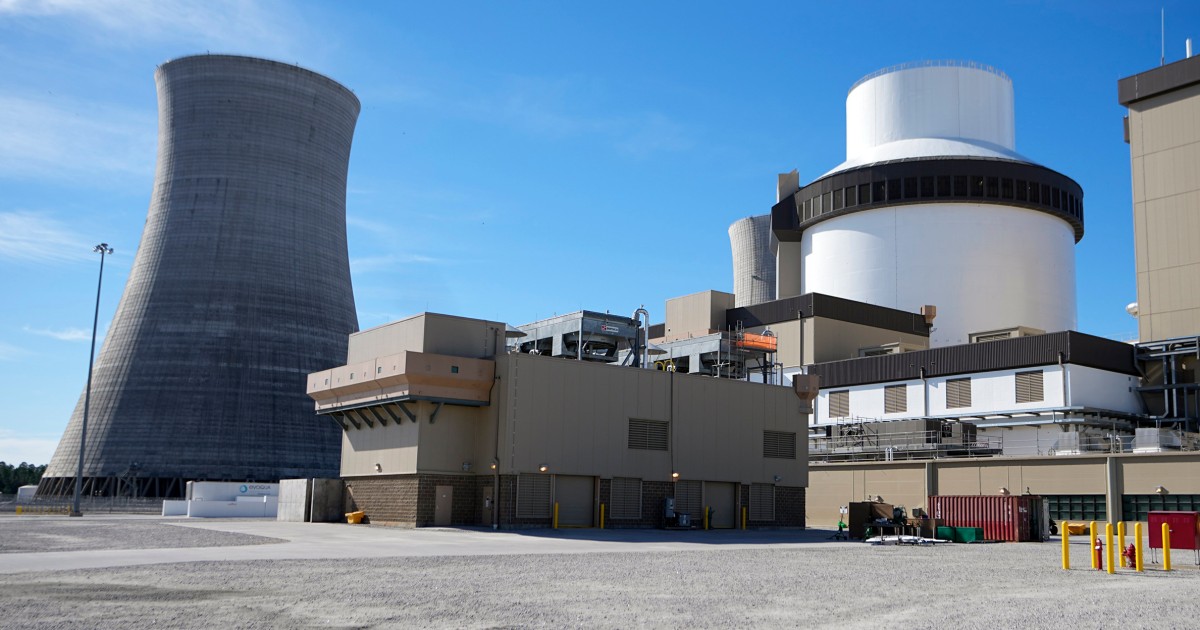First U.S. nuclear reactor built from scratch in decades enters commercial operation in Georgia::ATLANTA — A new reactor at a nuclear power plant in Georgia has entered commercial operation, becoming the first new American reactor built from scratch in decades.



Fusion and fission are quite different. A practical fusion reactor does not exist. It’s outside our technological capability right now. Current fusion reactors are only experimental and can not maintain a reaction more than a small fraction of a second. The problem is plasma containment. If that can be solved, it would be possible to build a practical fusion reactor.
The fuel for a working fusion reactor would likely be deuterium/tritium which is in effect unlimited since it can be extracted from seawater. Also the amount of fuel required is small because of the enormous amounts of energy produced in converting mass to energy. Fusion converts about 1% of mass to energy. Output would be that converted mass times the speed of light squared which is a very, very large number, in the neighborhood of consumed fuel mass times 1015.
Fusion is far less toxic to to the environment. With deuterium/tritium fusion the waste product is helium. All of the particle radiation comes from neutrons which only require shielding. Once the kinetic energy of the particles is absorbed, it’s gone. There’s no fissile waste that lingers for some half life.
Wow. Thanks for breaking this down in layman’s terms, super interesting.
Here’s something more interesting. A matter-antimatter reactor converts 100% of mass to energy so it’s a hundred times more efficient than fusion. In modern times antimatter has been produced at quantum levels in large accelerators such as the Hadrian collider. So it does in fact exist and can be produced.
However a matter-antimatter reactor has some serious technical problems. For one it’s currently impossible to create antimatter in any practical quantity. Second if antimatter comes in contact with matter, instant boom. Like a sugar cube size of the stuff could level a large city. So containment would be an insurmountable problem.
The interesting part is when you see an antimatter reactor in shows like Star Trek, it’s based on real science. Interestingly in 1968 when they wrote the original Star Trek, nobody knew antimatter was a physically real thing. That’s a case of sci-fi predicting science.
The internet can be cool sometimes.
But antimatter needs energy to create, probably more energy than it can produce. Unless you can find some source of it in the environment. Fusion is much more likely to be feasible.
Antimatter might make a good compact way to store energy for a starship, if it was created in a large fixed facility with access to huge power sources. But it’s not a way to generate energy by itself.
Your info is a little out of date - some fusion experiments have been able to maintain fusion for almost a minute. However, your point still stands. We are decades away at a minimum untill a viable fusion reactor.
My guess is that fusion will be too expensive for commercial use unless they can get a super compact stellarator design to produce huge amounts of energy, and make them cheap to build (HA!).
Or we will see them in spaceships. :P
I was just future proofing my comment for things like this: https://youtu.be/_bDXXWQxK38
Here is an alternative Piped link(s): https://piped.video/_bDXXWQxK38
Piped is a privacy-respecting open-source alternative frontend to YouTube.
I’m open-source, check me out at GitHub.